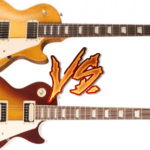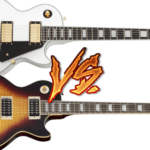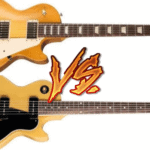Through the years, there has been a few wood combinations that worked out like a charm for many manufacturers.
This could be most probably because of tradition, fear of innovation since we guitar heads are very purist and in many cases only want original specs in our instruments, and also probably because of economies of scale.
You see, it’s likely cheaper and easier to just source a few different kinds of wood than having a permanent stock of many different kinds of dead trees.
Of course, each wood has its own tonal character, and through the years we formed an overall idea of how different tonewoods affect tone.
However, what you can expect from different wood combinations is a slightly more convoluted topic, for I which I will try a short answer next:
Different tonewood combinations will have varying influences on guitar tone. For instance, the usual Fender combo of Alder + Maple has a characteristic mid-scooped sound to it, while the classic Gibson Mahogany + Rosewood combo has more present mids and greater bass response.
In this article, I will dive deeper into the implications different combinations of tonewoods have on a guitar.
I will list the most popular ones and give my opinion on how they sound and how they achieve that timbre.
Are you ready to get started?
Let’s go!
How do wood combinations affect guitar tone?
Subscribing to Paul Reed Smith’s idea of guitar tone being formed in a subtractive way, I will say you that it’s not what tonewoods add to a guitar, but what they take from it.
If you imagine a string vibrating in the void it will have a “natural” unaltered tone. As you attach guitar parts to it, to make an instrument, some of its energy will be absorbed.
How much, and in what range of frequencies that energy is taken is what will define the sound you will get.
Think of it as an EQ filter you put that “natural” string tone through. You can’t add, but taking away from every other frequency but the one you would like to increase will have the same practical effect as boosting it.
When you now consider the interaction between body tonewoods with neck tonewoods the situation is a bit more complex but still as straightforward.
How much do wood combinations affect guitar tone?
Quantifying how much a single feature of a guitar affects its tone, it’s an almost impossible task.
I can offer you only my opinion formed by playing different instruments and reading what other musicians have to say.
Overall, the consensus is that in what respects tonewoods, the neck of a guitar has a bigger influence on its tone than its body.
Different matches of woods will generate synergies, that will be easily associated with the characteristic sounds of the guitar models that popularized those combinations through the years.
A great experiment to further describe how big the influence of these combinations could be would be to build, say a Stratocaster with materials more characteristic to a Les Paul, for instance.
I think the strat tone will still be there, but some of the character from the hard mahogany of a Les Paul will be also present.
Most common wood combinations and their effect on tone
Here are some of the most popular tonewood combinations the biggest manufacturers have popularized over the years.
As I mentioned earlier, probably the ubiquity of these combinations or slight variations of these is because of the conservative preferences of the players.
This, I think is not a bad thing, however.
It anchors the expectations of what a specific model should sound like with the classic tone it has had through the years.
Of course, for those seeking new horizons, there will be always smaller manufacturers that push the boundaries and try out new wood choices.
Without further to do, here are what I think are the most popular guitar tonewood combinations:
Alder / Swamp Ash + Maple

This is the classic Stratocaster setup.
Alder and Swamp Ash are very neutral tonewoods. They have a very balanced tone profile, and generally, let the neck and the rest of the components and build features of the guitar shine on their own.
Maple is a hardwood very commonly used in necks. It has a scooped mid response, strong lows and highs, and lots of sustain.
Alder / Swamp Ash + Maple + Rosewood
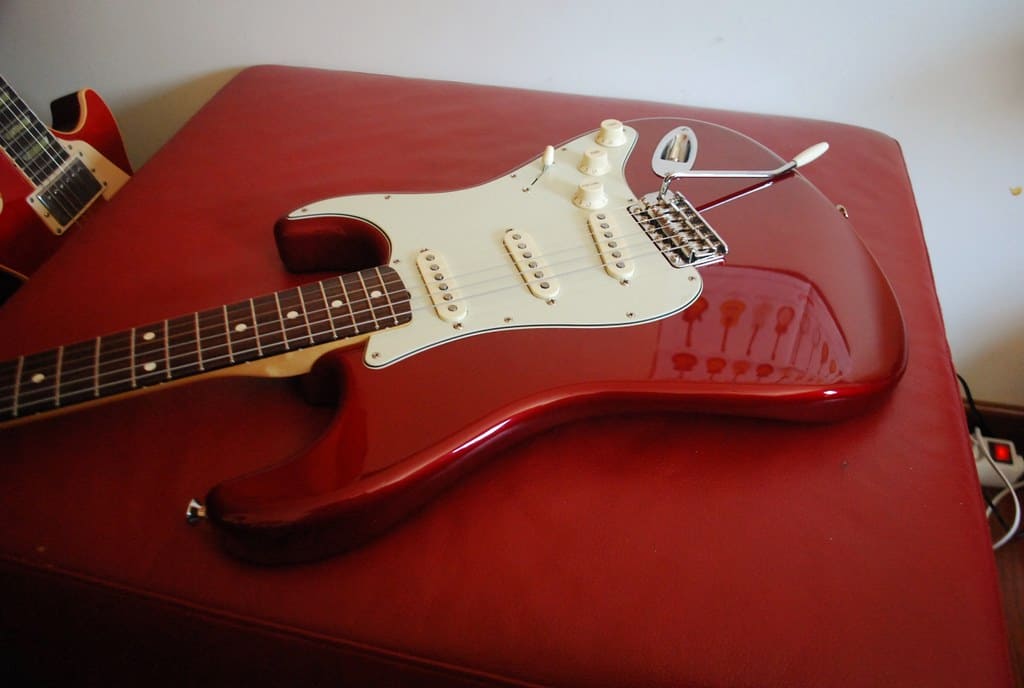
Another common variation on the Strat configuration.
Adding a rosewood fretboard darkens a bit the sound, but only in nice places. Rosewood is known to cut off harsh high frequencies and give guitars a more “rounded” overall tone.
I personally love this combination and is the one on my main guitar.
Mahogany + Rosewood / Mahogany + Maple + Rosewood
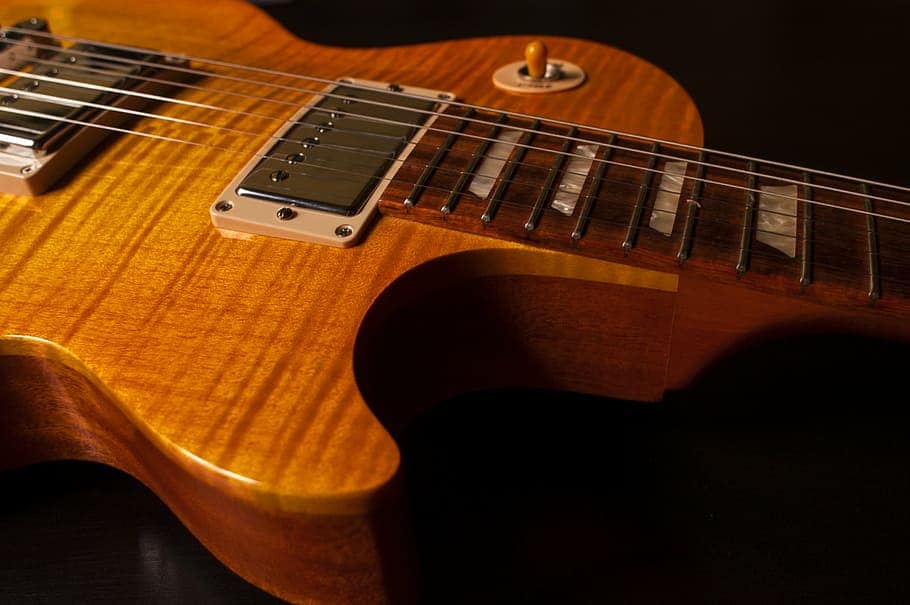
This is Gibsons’ bread and butter. You will find this combo on Les Pauls and SGs.
Mahogany is a hardwood with a reddish-brown straight grain. It is very popular for its use on high-end furniture, and it’s probably a more luxurious take on guitar bodies.
But a higher price doesn’t mean necessarily a better instrument.
In this case, it’s just a different flavor.
Mahogany is known for having a great low and mid-end, and a not-so-great high end. However, that highs cut-off is what defines its character and why many players love the Gibson tone, myself included.
Rosewood, as you could imagine, is a match made in heaven for this tonal concept, and it helps enforce that tidiness on the upper register of frequencies.
Les Pauls incorporate a maple top that has a mid-scooping effect that gives that model its singular character.
Mahogany + Maple + Ebony
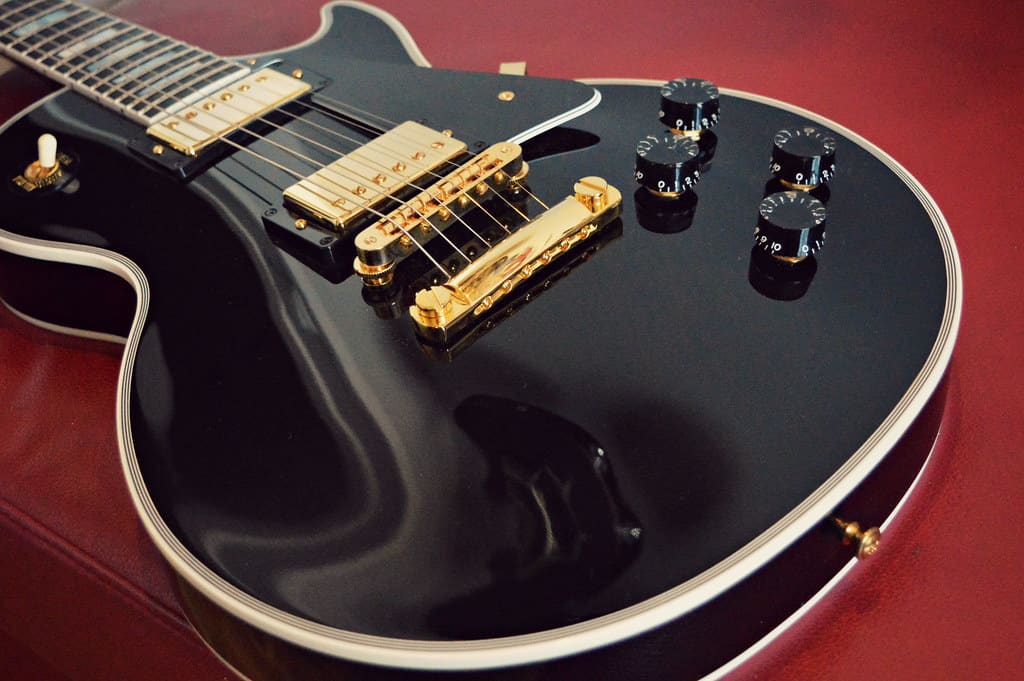
This is the configuration of the Les Paul Custom, for instance.
Ebony is another luxurious wood, with a very dark, almost black look. It’s a very hard and stiff material, that helps retain a tight low end, and lets the instrument achieve a great sustain.
This fretboard tonewood, however, is known for being a bit brighter than rosewood, and it can give the instrument a slight bite in the higher frequencies that cuts extremely well in the mix.
Conclusions and recommendations
Getting obsessed by tonewoods and its combinations is absolutely not a healthy thing.
I think knowing all of this stuff is very interesting, and nice food for thought, but ultimately choosing and bonding with an instrument is about feel, and many other things that can’t be explained with words.
It doesn’t matter if your favorite guitar is made of cardboard or from a 300 hundred-year-old piece of mahogany from Honduras blessed by an ancient god.
What matters is if that guitar makes you happy when you play it and if it helps you achieve, or at least get towards the tone you have ringing in your head.

Hello there, my name is Ramiro and I’ve been playing guitar for almost 20 years. I’m obsessed with everything gear-related and I thought it might be worth sharing it. From guitars, pedals, amps, and synths to studio gear and production tips, I hope you find what I post here useful, and I’ll try my best to keep it entertaining also.


